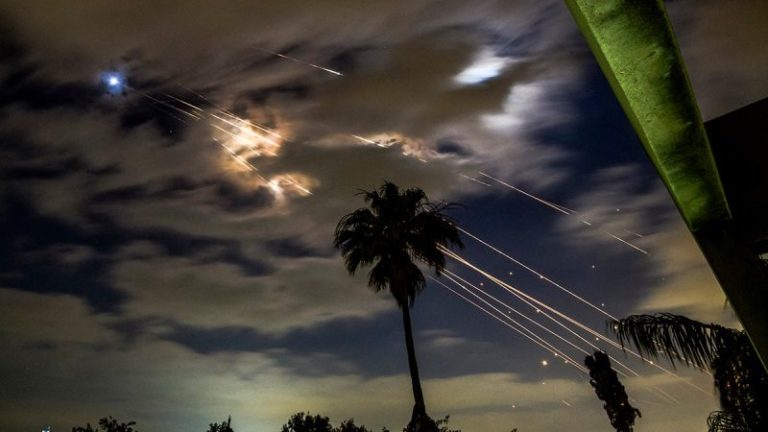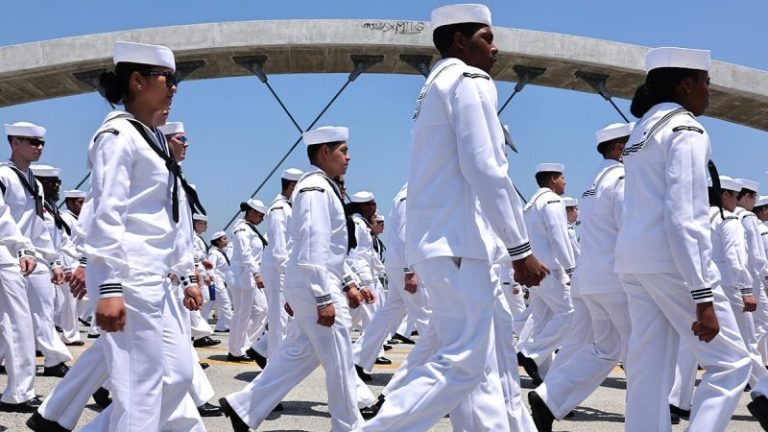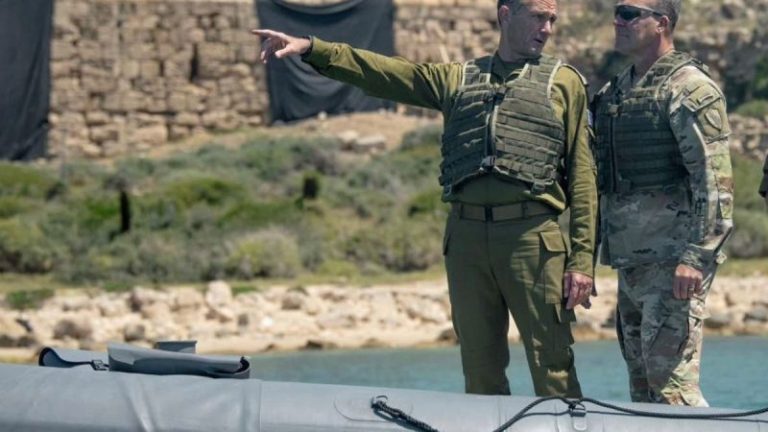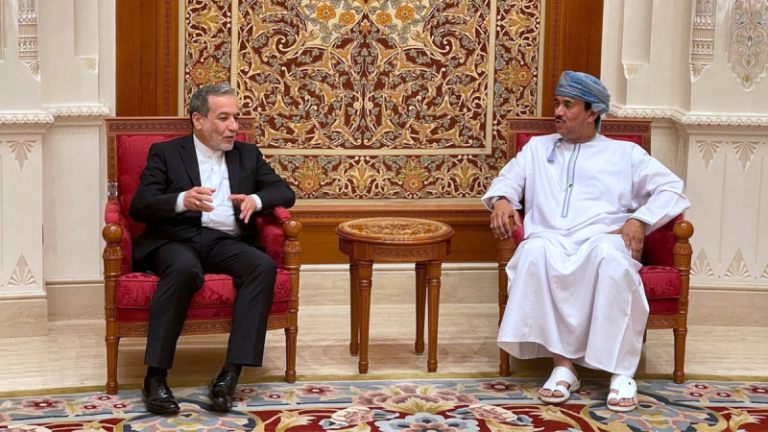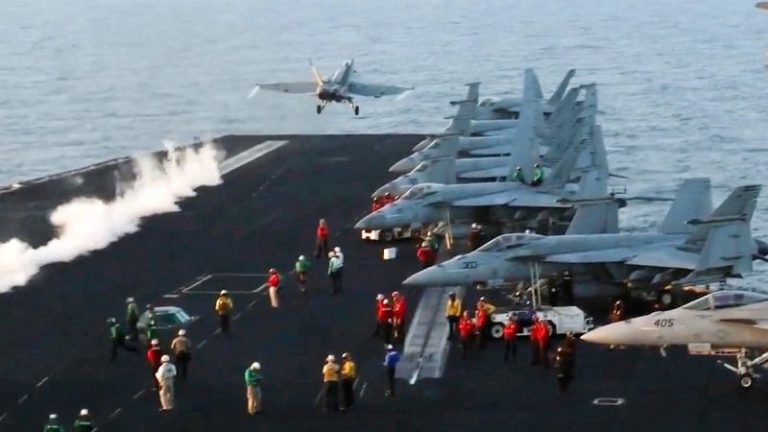Army Gen. Michael ‘Erik’ Kurilla is no stranger to conflict, especially in the Middle East.
Two decades ago as a lieutenant colonel, he was at the front lines of combat fighting off insurgents in Mosul, Iraq, while leading the 1st Battalion, 24th Infantry Regiment. The battalion’s mission was to conduct security patrols and coordinate offensive attacks against anti-Iraqi insurgents targeting Iraqi security forces and Iraqi police stations.
During Kurilla’s tenure leading the battalion, more than 150 soldiers earned the Purple Heart for injuries, and the battalion lost at least a dozen soldiers, The New York Times reported in August 2005.
‘There will always be somebody willing (to) pick up an AK-47 and shoot Americans,’ Kurilla told The New York Times in August 2005.
Kurilla did not complete that deployment unscathed. Later, in August 2005, Kurilla found himself caught in a Mosul, Iraq, firefight, where he sustained multiple gunshot wounds, earning him a Bronze Star with valor and one of his two Purple Heart awards.
Now, Kurilla is facing another battle as the commander of U.S. Central Command, or CENTCOM, serving as the top military officer overseeing U.S. military forces based in the Middle East.
That means Kurilla, who attended the U.S. Military Academy at West Point, is at the forefront of military operations as President Donald Trump contemplates whether to engage in military strikes against Iran’s nuclear sites.
CENTCOM is one of the U.S. military’s 11 combatant commands and encompasses 21 nations in the Middle East in its area of operations, including Iraq and Afghanistan.
Those familiar with Kurilla claim he’s the perfect person for the job, and Secretary of Defense Pete Hegseth described Kurilla as an uplifting leader.
‘General Kurilla is a bold, dynamic, and inspiring leader who strikes fear into the hearts of America’s enemies,’ Hegseth said in a statement Thursday to Fox News Digital. ‘He’s a warrior through and through who always puts his country, mission, and troops first. It has been an honor to serve alongside him in defense of our great nation.’
Retired Army Gen. Mark Milley, the former chairman of the Joint Chiefs of Staff, said in 2022 when Biden nominated Kurilla for the role that Kurilla is the ideal CENTCOM leader.
‘If there ever was some way to feed into a machine the requirements for the perfect leader of CENTCOM — the character traits, the attributes, the experiences, the knowledge and the personality that would be ideal — that machine would spit out Erik Kurilla,’ Milley said in 2022, according to the Defense Department. ‘Erik’s got vast experience in combat (and) on staffs.
‘He’s a visionary, he’s a thinker and he’s a doer,’ Milley said. ‘He understands both the physical and human terrain and is able to identify root causes of problems and develop systems. He’s not at all a linear thinker. He’s actually a very gifted problem-solver.’
Retired Marine Corps Gen. Frank McKenzie, Kurilla’s CENTCOM predecessor, voiced similar sentiments.
‘I can’t think of anybody better qualified to lead CENTCOM’s next chapter than Erik Kurilla,’ McKenzie said in 2022, according to the Pentagon. ‘He’s no stranger to the CENTCOM (area of operations). He’s no stranger to the headquarters.’
Notable figures who’ve previously filled the job leading CENTCOM include former defense secretaries, retired Gen. Jim Mattis, who served during Trump’s first term, and retired Gen. Lloyd Austin, who served during former President Joe Biden’s administration.
Fox News Digital reached out to CENTCOM, McKenzie and Milley for comment and did not get a response by the time of publication.
The region is familiar territory for Kurilla. The general spent a decade between 2004 and 2014 overseeing conventional and special operations forces during consecutive tours in the Middle East that fell under the CENTCOM purview.
Additionally, Kurilla has served in key CENTCOM staff and leadership positions, including serving as the command’s chief of staff from August 2018 to September 2019. Prior to leading CENTCOM, the general also commanded the 2nd Ranger Battalion, the 75th Ranger Regiment, the 82nd Airborne Division and the XVIII Airborne Corps, according to his official bio.
In addition to deploying to Iraq as part of Operation Iraqi Freedom and Operation Inherent Resolve, he deployed to Afghanistan with Operation Enduring Freedom. Other awards he’s earned include the Combat Infantryman Badge, awarded to Army infantry or special forces officers who’ve encountered active ground combat.
Kurilla, who the Senate confirmed to lead CENTCOM in February 2022 and will exit the role later in 2025, told lawmakers on the House Armed Services Committee June 10 that, since October 2023, when Hamas first attacked Israel, American service members have faced increased threats in the region.
Specifically, he said, U.S. troops have come under direct fire by nearly 400 unmanned aerial systems, 350 rockets, 50 ballistic missiles and 30 cruise missiles launched by Iranian-backed groups.
He said CENTCOM has encountered the ‘most highly kinetic period than at any other time in the past decade.’
‘We have been at the brink of regional war several times with the first state-on-state attacks between Iran and Israel in their history,’ Kurilla told lawmakers. ‘In the Red Sea, Houthi attempts to kill Americans operating in the Red Sea necessitated an aggressive response to protect our sailors and mariners and restore freedom of navigation. This is while Tehran is continuing to progress towards a nuclear weapons program — threatening catastrophic ramifications across the region and beyond.’
As a result, Kurilla said CENTCOM is prepared to use military force to prevent Iran from becoming a nuclear-armed state. Kurilla said he has provided Trump and Secretary of Defense Pete Hegseth a host of options to employ to eliminate the threat of a nuclear Iran.
Since Kurilla’s testimony, tensions have escalated even further in the Middle East after Israel kicked off massive airstrikes against Iran’s nuclear sites that Israel claims have killed several high-ranking military leaders. Likewise, Iran also launched strikes against Israel as the two ramp up military campaigns against one another.
Trump is still navigating whether the U.S. will conduct direct strikes against Iran. Trump told reporters he may order strikes targeting Iranian nuclear sites and that the ‘next week is going to be very big.’
‘Yes, I may do it. I may not do it. I mean, nobody knows what I’m going to do,’ Trump said. ‘I can tell you this, that Iran’s got a lot of trouble, and they want to negotiate.’
This post appeared first on FOX NEWS



